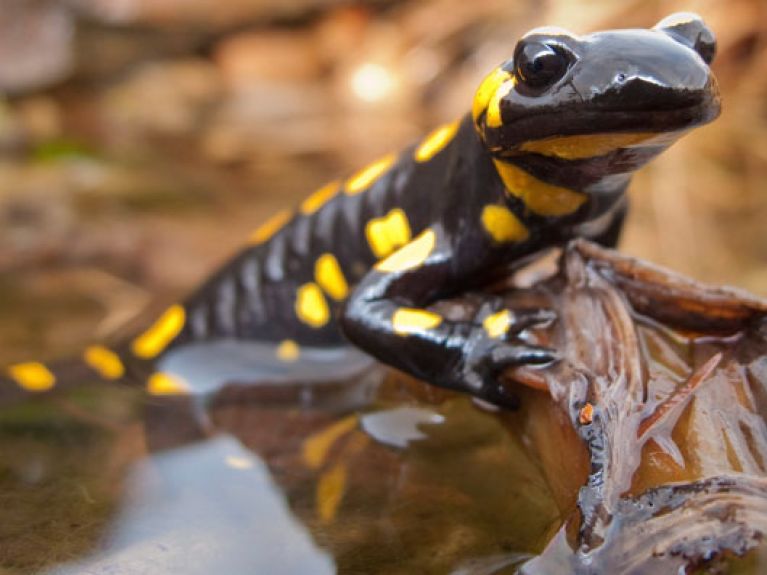The Animals of the Year 2016
For the year 2016 nature conservation organisations have once again selected individual species as “Animals of the Year” with the aim being to draw attention to their specific circumstances.

Bird of the Year 2016: Goldfinch. The red face with the black eye-mask and the yellow stripe on the wing are the distinctive features of the goldfinch, one of Europe’s most colourful songbirds. It particularly likes to settle in orchards and meadows dotted by fruit trees. However, the increasing intensification of agriculture and construction on brownfield sites are destroying food resources and the habitat of this Bird of the Year, which was selected by the German Nature and Biodiversity Conservation Union (NABU).
Wild Animal of the Year 2016: European hamster. The European hamster is also on the “red list” in Germany. The reason for its decline is a shift in agriculture: fields of wheat, rye and corn are giving way to maize cultivation. Maize is not a suitable habitat for this little mammal, which was chosen as Wild Animal of the Year 2016 by the German Wildlife Foundation. And where wheat or oats are cultivated, the fields are harvested too early. Without crop coverage, the hamsters are easy pickings for foxes or martens.
Amphibian of the Year 2016: Fire salamander. The yellow and black fire salamander is actually hard to miss, yet the German Herpetological Society (DGHT) has placed it firmly in the spotlight for 2016. The fire salamander is suffering due to the destruction of its habitat, for example due to the intense use of mixed deciduous forest or the encroachment of roads into forested areas.
Fish of the Year 2016: Pike. The fact that this is a pretty special fish is proven by the German saying “toller Hecht”, which literally means “great pike” but refers to a person who really sticks out for his prowess. The pike was chosen as Fish of the Year 2016 by the German Angling Association, with the aim of raising awareness of its endangered status. Only where riverbanks and wetlands have been preserved in a natural state or renaturalised can they serve as suitable places for shelter or spawning grounds for pike.
Butterfly of the Year 2016: Currant moth. By night the heat-loving currant moth is drawn to the light. This is when its black and white cubed pattern, which gives it its nickname “magpie moth”, can be seen to best effect. Sadly though, this moth is an ever rarer sight in Germany; monocultures of pine and spruce are increasingly depriving it of its natural habitat.

